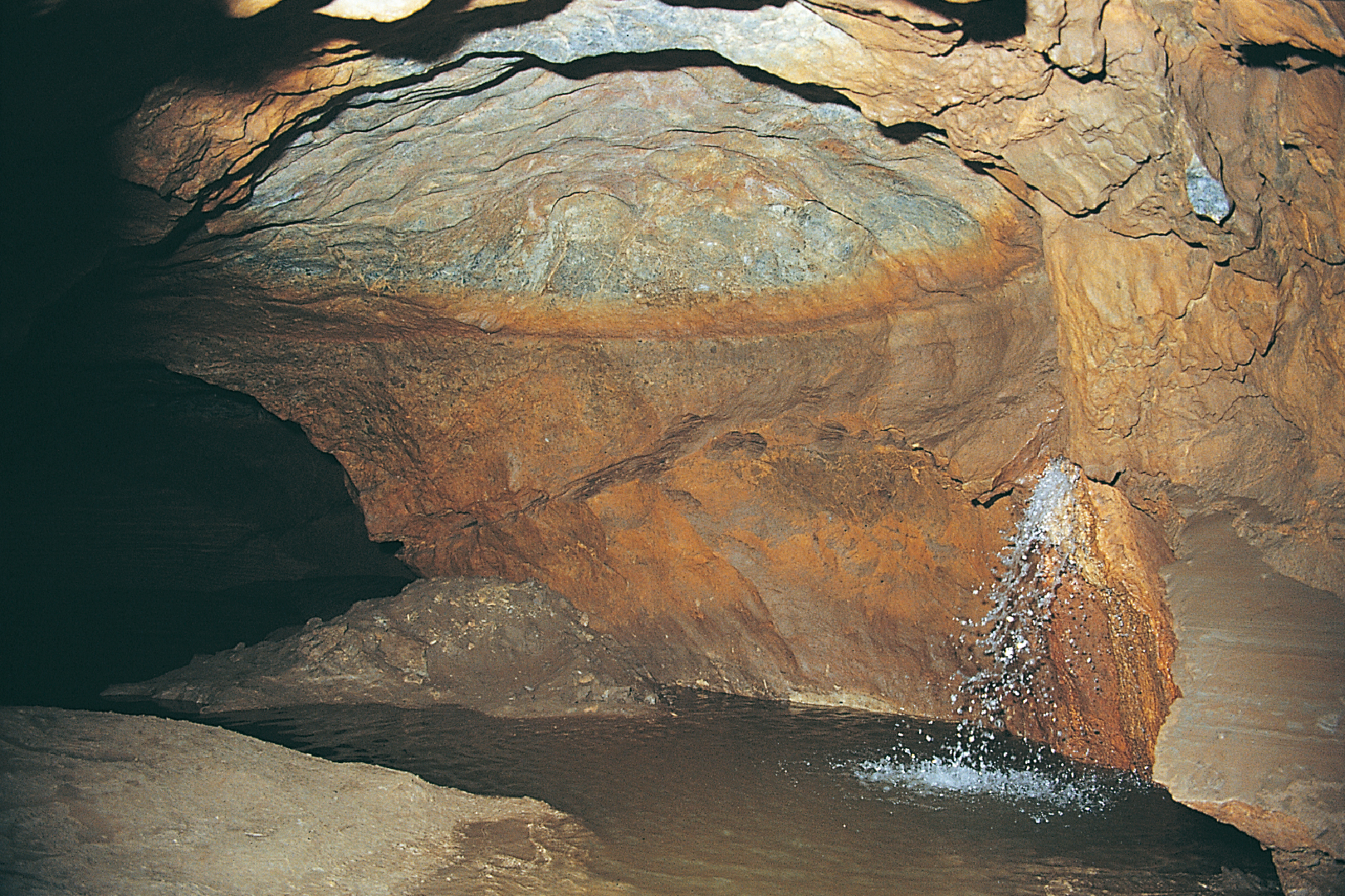Many tunnels in the Grotta del Vento have been dug under pressure by water that completely filled them, exerting its erosive action in all directions. In that way circular passages have been formed, elliptical in shape or however round with evident signs left on the walls by the vortexes caused in the flow of water by the spurs in the rock.
In various points on the ceiling some round cavities with a spherical shape can be seen, inside which the rock appears to be very clean, as if the muddy water of the floods had never touched it, whereas below a distinct line of level that is perfectly horizontal it is always covered by a thin yellowish brown coating.
During floods these cavities are real traps where the air remains trapped by the rising movement of the water. The rock is actually clean since the compressed air inhibits the water from touching the ceiling, which however gets corroded by the humidity rich in carbon dioxide.
Below the level the colour of the rock is due to traces of clay which during floods makes the water cloudy. All this happens only if the rock above the bubble, compact and without fissures, is impermeable also to air.
When they are particularly large, the compressed air bubbles can be a providential temporary refuge for the speleodivers in the case of their
oxygen tanks running out, while waiting for someone to bring them other full tanks. They can however be very dangerous in the areas with volcanic phenomena, where the endogenous emissions could saturate them with sulphuric acid. Other toxic gases could develop into highly polluting water.

This large air bubble is at the initial siphon of the Grotta del Vento, at only 70 metres from the entrance. The large underground spring can be seen flowing from the wall on the right.







